Alice and Algebra
Lewis Carroll, (Charles Dodgson) Mathematician
Lewis Carrol, the pen-name for Charles Lutwidge Dodgson, is famous as a writer of nonsense poems and children’s books, however, he was also a mathematician. Born on 11 July 1832 in Daresbury, England, Carroll lectured mathematics at Oxford. It was here he told a story to one of the children he babysat, Alice Liddell. This story is speculated to be the basis of his arguably most famous novel, Alice’s Adventures in Wonderland. However, the published version of the story contains lots of hidden maths.
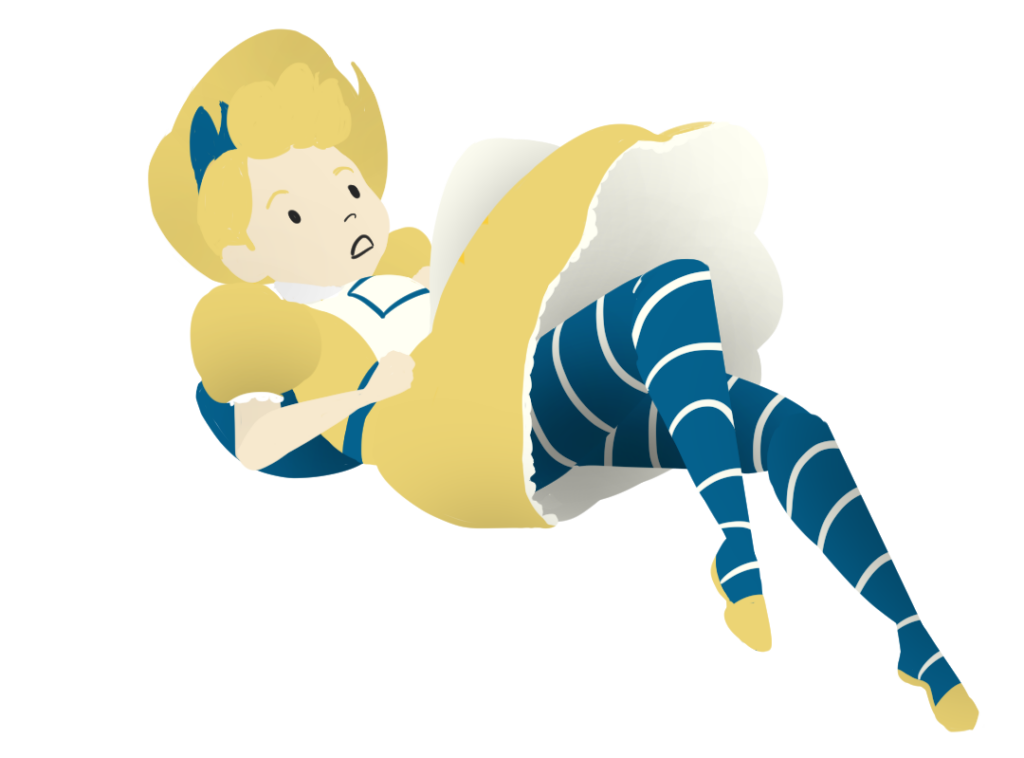
Image credit: Julie Hatfield, CC BY-SA 4.0 DEED.
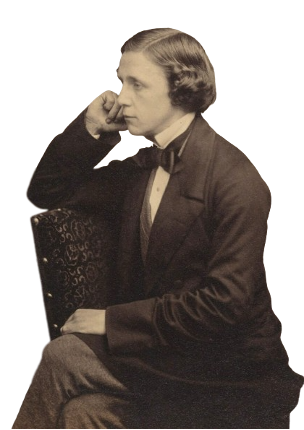
Image credit: Lewis Carroll, public domain via Wikimedia Commons.

Image credit: Lewis Carroll, public domain via Wikimedia Commons.
Logic and Maths in Alice’s Adventures in Wonderland
Carroll was a mathematical conservative. In the late 19th century, algebra was changing from pure numbers to symbols (symbolic algebra) and proofs were getting more colloquial. Most of the mathematics in Alice’s Adventures in Wonderland is a critique of the maths of the period. We can look at the following examples which demonstrate this.
“Standard” Multiplication
Alice, seven years old, knows her times tables. But how is it that her times tables are so wrong? 4 times 5 isn’t 12, and 4 times 6 is definitely not 13, as said in the novel.
But lo and behold, this is in fact true! This is due to the use of different bases. (You can learn more about different bases here.) We normally work in base 10, but if we look at different bases, then the puzzles do indeed work. 4 times 5 in base 18 is 12, and 4 times 6 is 13 if the base is 21. In fact, the formula for Alice’s puzzling multiplication is 4𝑛 in base 3+3𝑛, so 4 times 7 will be 14 in base 24.
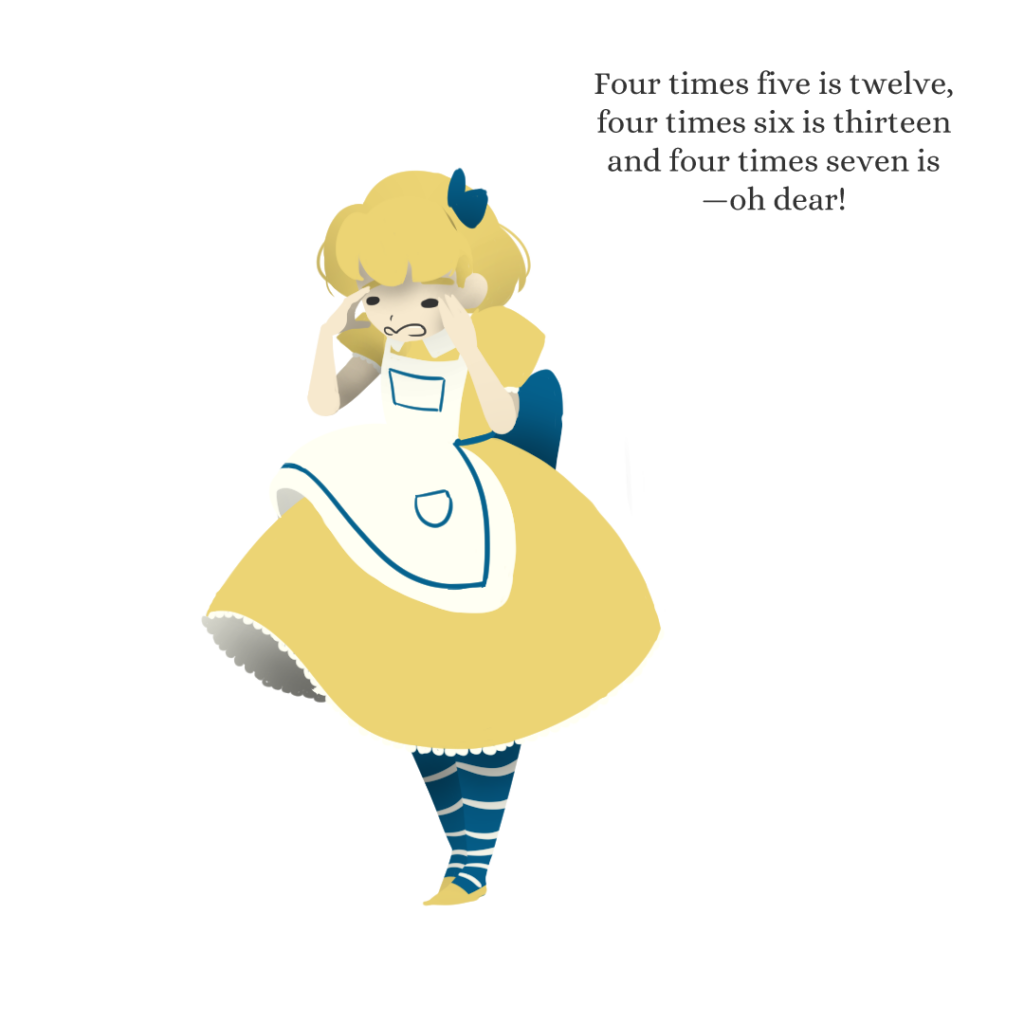
Image credit: Julie Hatfield, CC BY-SA 4.0 DEED.
Caterpillars and Geometry
Today, the idea that algebra isn’t purely about real numbers (both rational and irrational numbers) isn’t novel, but in the Victorian Era, this was a new development. An article from Melanie Bayley in The New Scientist describes the belief that the Caterpillar scene in the novel is actually about symbolic algebra, which is the use of algebra as a language, rather than just solving equations. (You can read more on symbolic algebra here!) The following is an example of this.

Image credit: Julie Hatfield, CC BY-SA 4.0 DEED.
The first British treatise by Augustus De Morgan on symbolic algebra was translated from Arabic as “restoration and reduction” (from “al jebr e al mokabala”). This describes the Caterpillar chapter in the novel in some sense. In the chapter, the Caterpillar tells Alice to “keep her temper.” He remarks that being so many different sizes isn’t very hard, however Alice doesn’t agree.
Intellectuals in Carroll’s day would have seen the word “temper” differently. It can mean “a middle state between extremes.” So the Caterpillar is actually telling her to keep proportional, or similar. In Euclidean Geometry, if the Caterpillar keeps his proportions, he’s still a Caterpillar, since magnitudes don’t matter, only ratios. (A big square is still a square, but a square with 2 longer sides and 2 shorter sides is no longer a square but instead a rectangle) However, when Alice goes out of proportion in the novel, we question what she is. She meets a pigeon who asks if she is a “serpent”, and she doesn’t know whether or not that’s true. After all, it’s commented that both snakes and little girls eat eggs, which is a similarity, however one is just longer than the other. And due to her change in size, Alice is now long too. In symbolic algebra, can we say Alice is still a little girl?
Babies are Pigs and Cats Grin
In one of the chapters, Carroll critiques the Principle of Continuity. In the scene, Alice enters the house of the Duchess and the Cook with the Pepper, where she meets a baby. Or is it a pig? Pigs and babies are the same here in Wonderland because they share the same “projected properties.” Essentially the Principle of Continuity says as long as the shape retains some of its basic properties, it can bend and shift into another shape. So, a circle is the same as an ellipse or the Cheshire cat’s weird, shifting grin. Since they retain the same principles, they are the same. A baby and a pig have the same number of limbs and holes and make similar noises, so they are the same.
But this is absurd! Surely babies and pigs and the ever-present smile are not the same at all? But they are in topology!
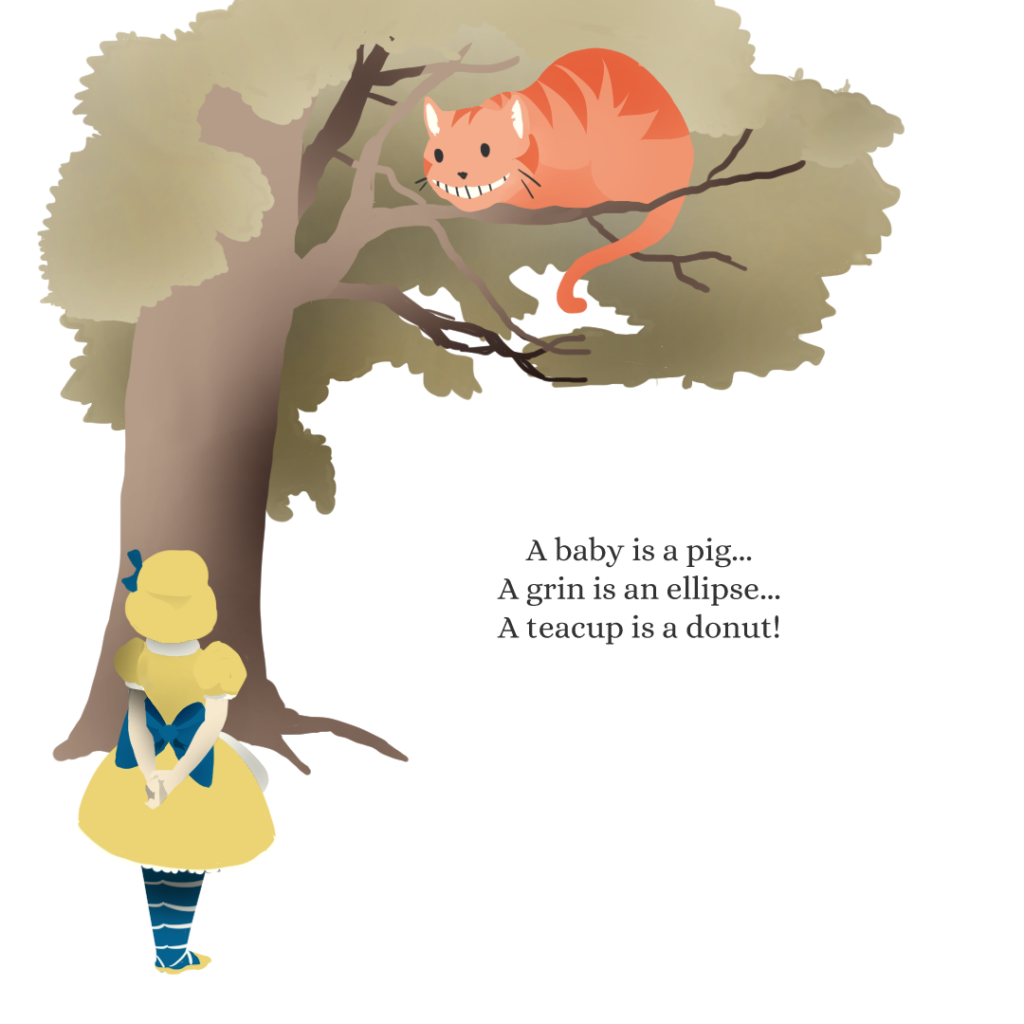
Image credit: Julie Hatfield, CC BY-SA 4.0 DEED.
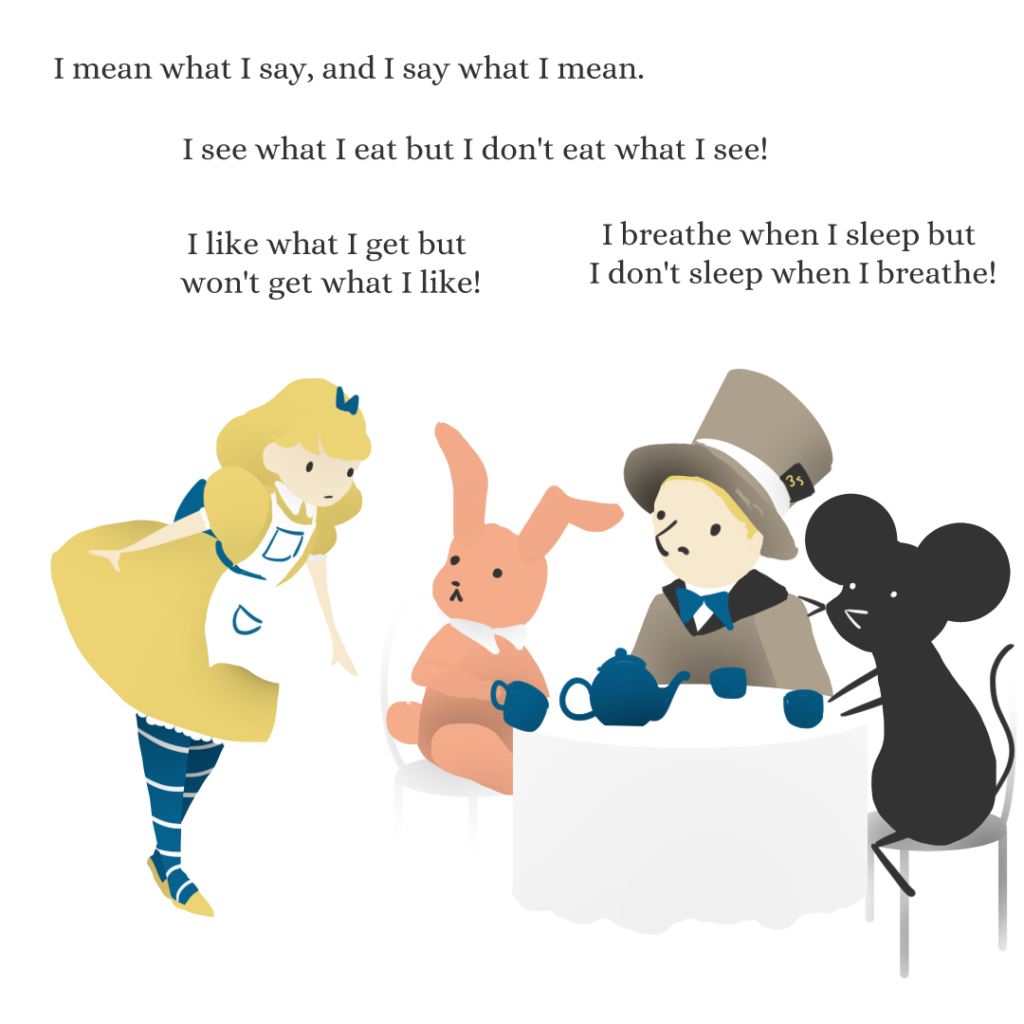
Image credit: Julie Hatfield, CC BY-SA 4.0 DEED.
Mad t-Party
Finally, everyone’s favourite scene: the Mad Hatter’s Tea Party. The Mad Hatter’s Tea Party is a reference to the Quaternions! Quaternions are a type of algebra which describe rotations in a 3D space. (You can read more about quaternions here.) In 1843, when mathematician William Rowan Hamilton introduced Quaternions, they were recognised by Victorians as revolutionising abstract algebra. Hamilton began with only three terms, one for each dimension, and later added a fourth, which he called “Time.” Without Time, the proposed Quaternions rotated on into infinity.
Early in the scene, the Hatter mentions that they’re missing a guest: Time! Without Time, they spend the rest of the day rotating around and around, until the Hatter and the Hare try to squeeze the Dormouse into the teapot, thinking if they can get rid of another dimension, then maybe they would stop rotating. They wouldn’t be Quaternions anymore, at least.
Alice can’t stop the rotation, even when she joins the party. She’s not Time and doesn’t have these special properties. See, Alice is commutative: she is the same forwards and backwards. The other three, however, are not, as their statements only work one way. She doesn’t fit into the group, and cannot replace the last “noncommutative” element. Thus, despite her best attempts, she is unhelpful.
Lessons with the Turtle
Finally, there’s the lessons of the Mock Turtle. The Mock Turtle explains that there are four new branches of arithmetic: ambition, distraction, uglification and derision. He talks of his lessons, and the way that every day they lessen. Day one is ten hours, day two is nine, all the way to day eleven, which is a holiday.
“And how did you manage on the twelfth?” Alice asks. The Gryphon, also there, doesn’t want to talk about this. Negative numbers are hard to manage. After all, what happens for negative one hour?
If you want some more Lewis Carroll maths, try some of his mathematical puzzles here!
Author
Julie Hatfield
Updated By
Siobhan Williams

